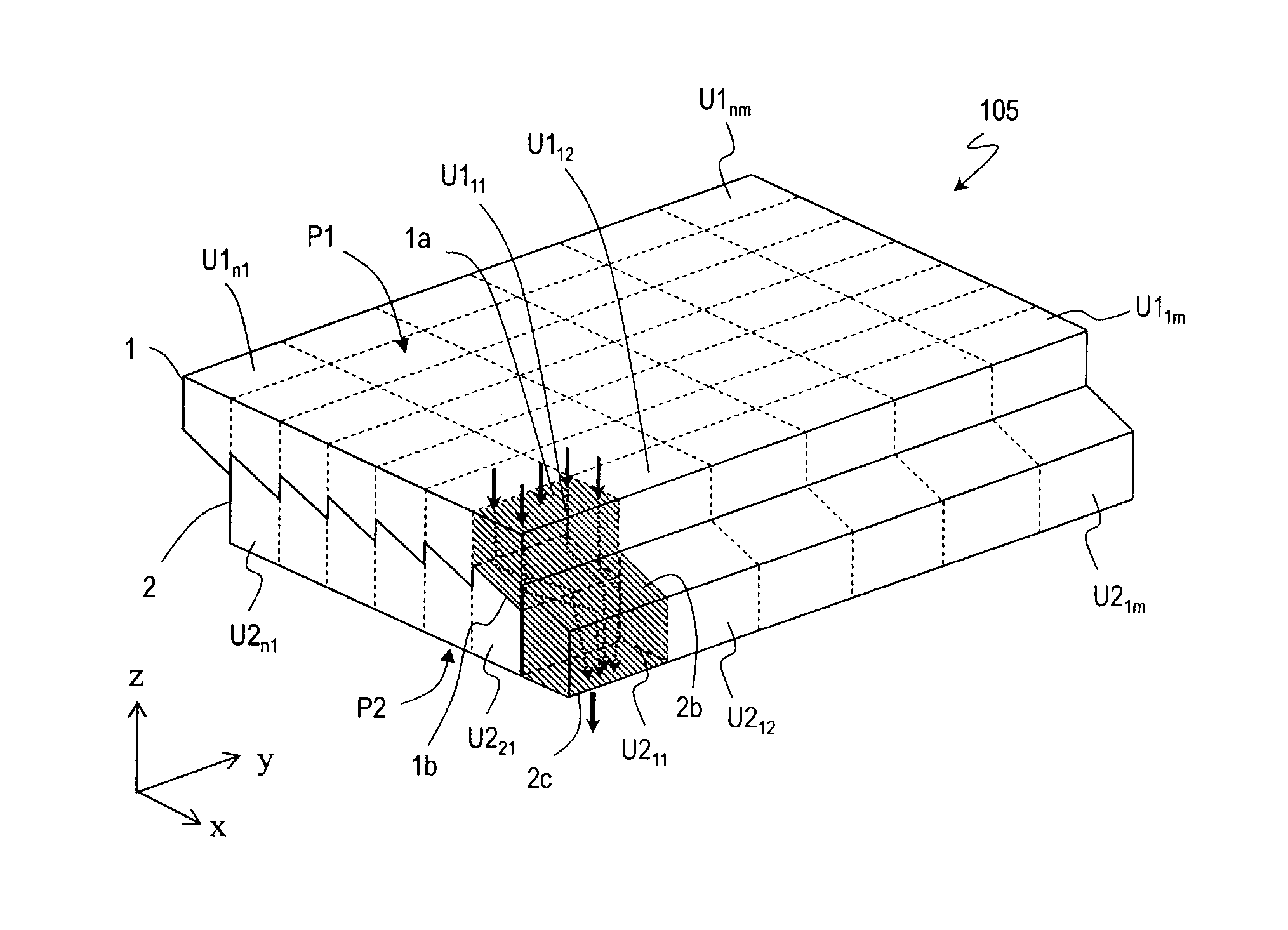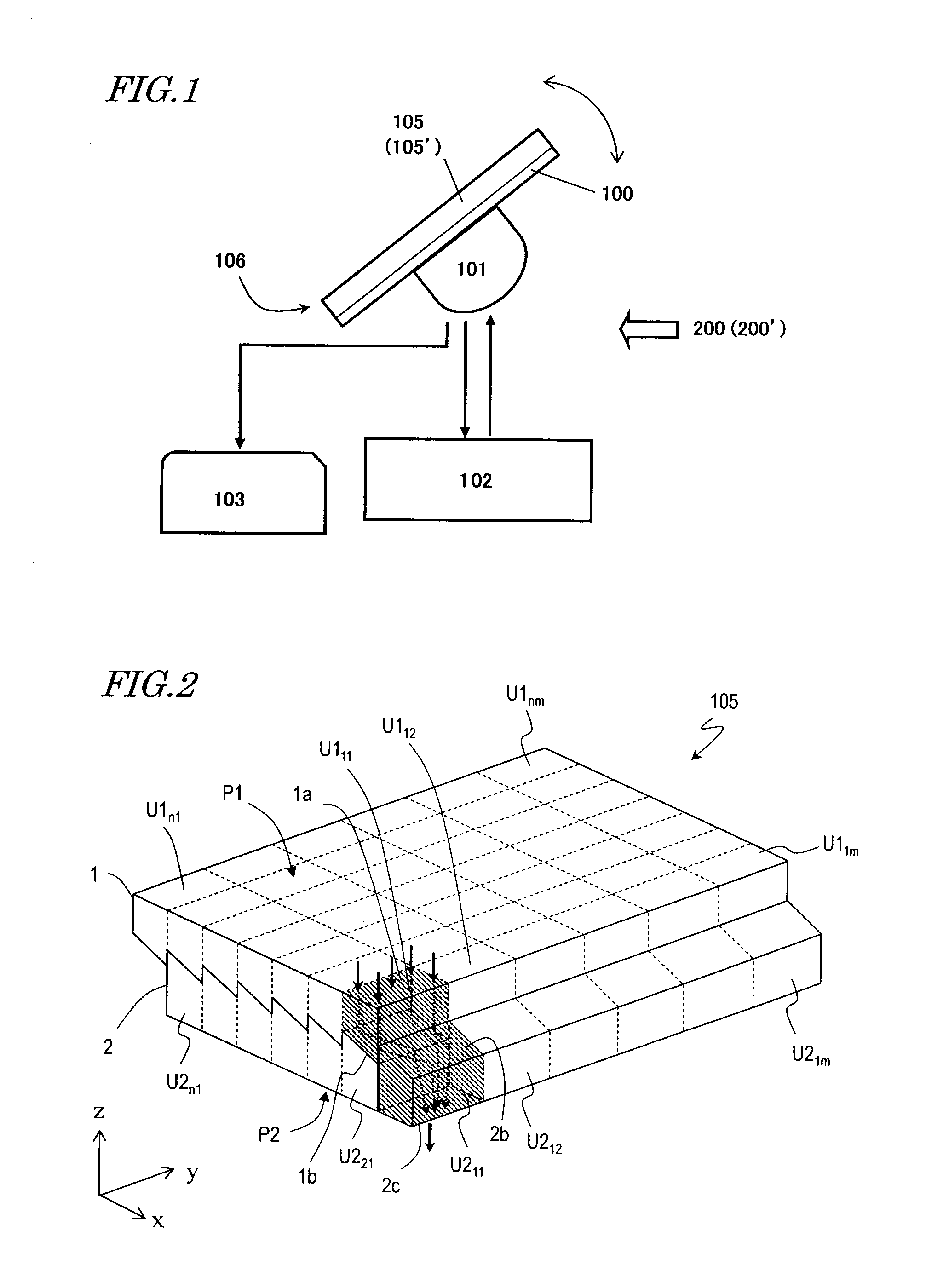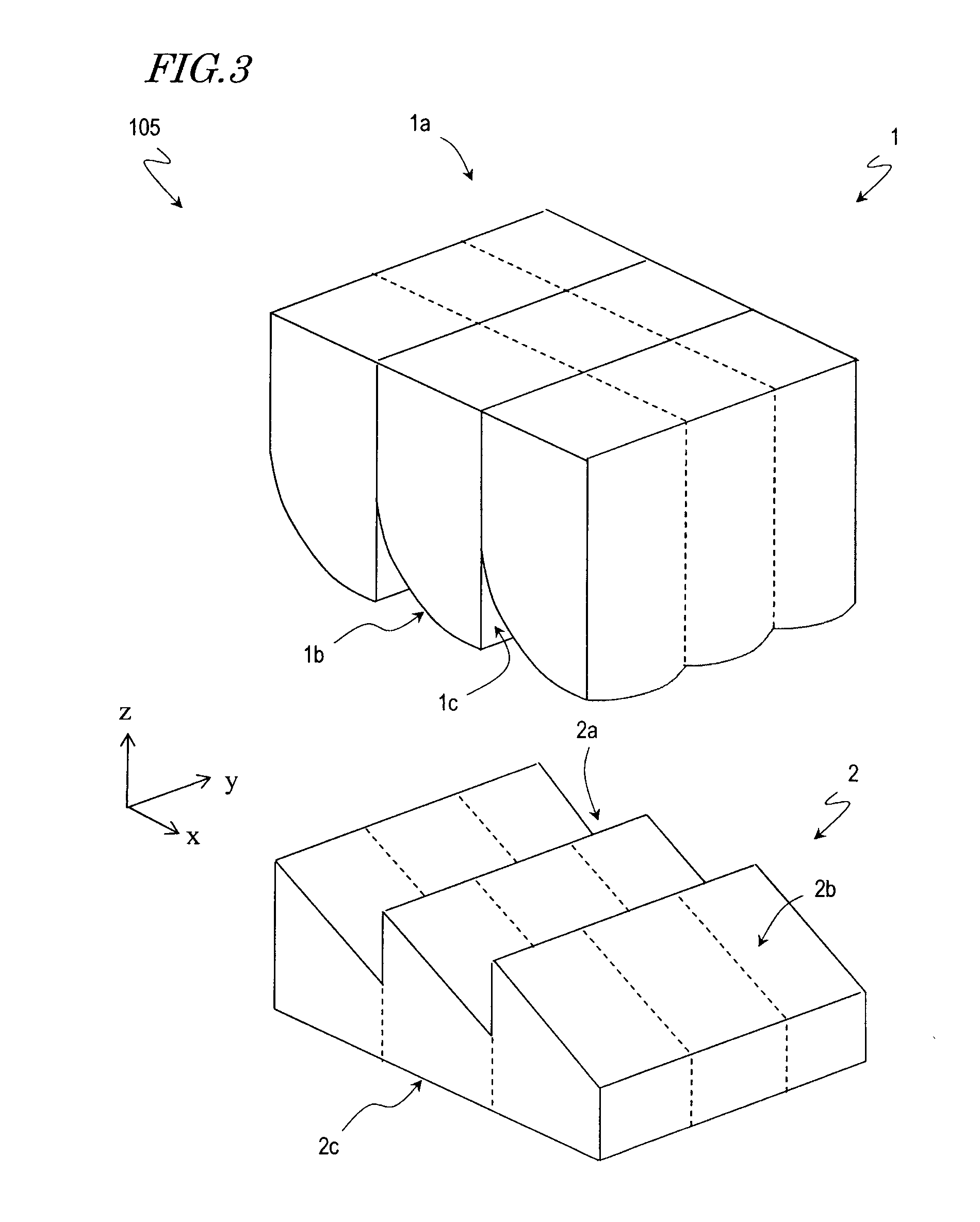Condensing lens array, and solar cell provided with same
- Summary
- Abstract
- Description
- Claims
- Application Information
AI Technical Summary
Benefits of technology
Problems solved by technology
Method used
Image
Examples
embodiment 1
[0051]FIG. 1 illustrates a general configuration for a first embodiment of a sun-tracking solar cell system. The sun-tracking solar cell system 200 shown in FIG. 1 can be used effectively as a relatively large scale solar power generator. This sun-tracking solar cell system 200 includes a concentrating solar cell 106, a rotating mechanism section 101 including a rotating motor to rotate the concentrating solar cell 106, a control section 102 which generates a tracking error of a solar cell substrate 100 with respect to the sun based on a signal supplied from the concentrating solar cell 106 and which sends a rotation signal to the rotating mechanism section 101, and a power storing and transmitting section 103 which either stores or transmits the electrical energy that has been generated by the solar cell substrate 100 through conversion. The entire sun-tracking solar cell system 200 may be formed by known technologies except the concentrating solar cell 106, which includes a concen...
embodiment 2
[0079]Hereinafter, a second embodiment of a concentrating lens array, solar cell including such an array, and sun-tracking solar cell system according to the present invention will be described with reference to the accompanying drawings.
[0080]As shown in FIG. 1, the solar cell system 200′ of this embodiment has the same structure as the solar cell system 200 of the first embodiment except that the system 200′ of this embodiment includes a concentrating lens array 105′ having a different structure from the counterpart of the first embodiment. Specifically, in each unit structure of the concentrating lens array 105′, the second and third surfaces 1b and 2b are cylindrical curved surfaces, which is a major difference from the first embodiment. Thus, the following description will be focused on the structure of the concentrating lens array 105′.
[0081]FIG. 8 is a perspective view schematically illustrating the configuration of the concentrating lens array 105′. In FIG. 8, the concentrat...
PUM
 Login to View More
Login to View More Abstract
Description
Claims
Application Information
 Login to View More
Login to View More - R&D
- Intellectual Property
- Life Sciences
- Materials
- Tech Scout
- Unparalleled Data Quality
- Higher Quality Content
- 60% Fewer Hallucinations
Browse by: Latest US Patents, China's latest patents, Technical Efficacy Thesaurus, Application Domain, Technology Topic, Popular Technical Reports.
© 2025 PatSnap. All rights reserved.Legal|Privacy policy|Modern Slavery Act Transparency Statement|Sitemap|About US| Contact US: help@patsnap.com



